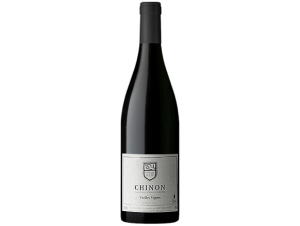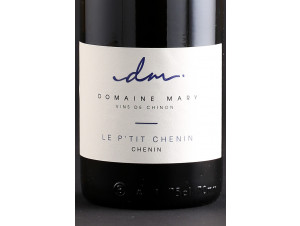You have no items in your shopping cart.
Wine Chinon
The Chinon appellation is located on both sides of the Vienne river, south of the Loire. The grape variety for the red wines is Cabernet Franc, while for the white wines for which Chinon is famous, Chenin is the king. The famous white wines of Chinon are fine, elegant, floral and have a minimum ageing potential of 5 years which varies according to the terroir. Read more on Chinon
-
Top Selling
-
Top Selling
-
Top Selling
Appellation Chinon
The Chinon AOC has a royal reputation
The wine history of Chinon dates back to Gallo-Roman times in 281 AD, when the ban on planting a vineyard above the Gironde was lifted. The first written traces of the export of Chinon wines to Nantes are dated to the 11th century with the account of the life and miracles of Saint Mexmes. Nevertheless, the dating of certain tools or containers found during archaeological excavations demonstrate that the beginning of exports dates from Antiquity. The early trade in wines from this region can be explained by Chinon's position at a road and river crossroads. It is moreover this position which favoured the establishment and development of the viticulture.
In the 12th century, under Henry II of Plantagenet, Chinon became the centre of the feudal domain and its wines were served at court. Philippe Auguste and Charles VII, who succeeded Henry II of Plantagenet, did the same, which contributed greatly to the growth of the Chinon vineyard.
It was at this time that the implantation of the Cabernet Franc, a grape variety originating from the South West, began. Called "Le Breton" its existence and qualities are praised by François Rabelais, a child of the country, in "Gargantua". In the 17th century, the marketing of Chinon wines grew and developed thanks to the presence of Dutch couturiers in Nantes. They exported the wines of Chinon, until then mainly white, to Northern Europe. These high quality wines, known as "wine of the sea", were subject to significant river taxes to reach the city of Nantes.
The commercial development of the wines of Chinon will contribute to the expansion of the quality vineyard until then mainly dedicated to the production of white wine. It was the phylloxera crisis at the end of the 19th century, which put an end to this domination and reversed the trend in favour of Cabernet Franc and thus of red wine.
In 1937, the Chinon wine defence union was created shortly before the recognition of the AOC Chinon by the INAO.
In order to defend and promote the wines of Chinon, the brotherhood of Entonneurs rablesiens was created in 1961, and today counts 40,000 people in its worldwide community.
The prominent role of the Loire and Vienne rivers for the Chinon AOC
The AOC Chinon is located at the crossroads of three regions: Anjou, Poitou and Touraine. The landscape of this appellation is divided between hillsides, plateaus and plains. The forests that structure the landscape drain the cold air masses and thus protect the vineyards from the northern winds. In addition, the Vienne and the Loire act as a thermal buffer and drain cold air masses. These characteristics make Chinon the warmest and driest AOC in Touraine with a tendency for early vegetative growth favourable to obtaining quality Cabernet Franc.
Other than, the role of thermal buffer, the Loire and the Vienne have built the landscape by erosion of the tuffeau to give hillsides, plateaus and plains where the Chinonese vineyard is located. Part of the vineyard has chalky-clay soils linked to the presence of more coloured tuffeau than in neighbouring appellations. On these soils we find locally sandy-clay soils with the presence of siliceous conglomerates.
On the banks of the Vienne river, soils with a sandy-gravelly dominance are found. In fact, the limestone subsoil is covered by alluvium deposited by river erosion, which gives the soils this characteristic.
Finally, on 70 ha of this AOC there are 8 "Puys", 6 on Chinon and 2 on Beaumont-en-Véron. These are limestone hillocks with dry, sandy soils that give rise to well-structured, long-keeping wines. The red wines represent 90% of the production. They are made from the Cabernet Franc grape variety with the possibility of blending it with Cabernet Sauvignon. The white wines are made from Chenin.
How to recognize a Chinon
.The white wines of Chinon made from Chenin have clay-limestone and sometimes clay-silica soils as their terroir. They have a pale gold colour with green highlights. The nose presents notes of citrus fruits, white flowers with a slight mineral side that brings complexity to the wine. With age, the bouquet develops notes of honey, grilled almond and quince. The palate has a nice tension that balances with the sweetness of the Chenin.
Rosé wines can be from saignées or direct pressing. Depending on the process chosen the colour is more or less pink, ranging from pale salmon pink to intense pink. The nose presents aromas of red fruits, rose, lychee sometimes supported by citrus notes. The palate is supple, lively and fruity.
The wines have an ageing potential and characteristics linked to their terroir of origin. The colour is purple-red. The aromatic bouquet delivers notes of red fruit, black fruit and sometimes spices such as cinnamon, vanilla and cardamom. For wines to be consumed in their youth the mouthfeel is supple, aromatic and fruity while for wines with a 10-year ageing potential the mouthfeel is structured and full. The aromatic bouquet of the ageing wines evolves on cocoa, spicy and smoky notes.
The liveliness and complexity of the white wines go well as an aperitif, with andouillette, goat's cheese, salmon in sauce or asparagus. The rosé is greedy and fruity, it will be suitable as an aperitif, with summer salads or a barbecue.
The great vintages of AOC Chinon
Chenin requires vintages that are neither too hot nor too cool to be able to express its full aromatic potential and freshness. The following great vintages can thus be noted in this AOC: 1928, 1945, 1947, 1953, 1959, 1976, 1989, 2005, 2007, 2008, 2009, 2010, 2015 and 2017.
Cabernet Franc due to its late ripeness requires warm vintages to be able to reach a good maturity and thus express all its aromatic potential. We can thus note the following great vintages: 1945, 1947, 1959, 1976, 1989, 2003, 2005, 2009, 2014, 2015, 2016, 2017 and 2018.
The great estates of the Chinon AOC
The Bernard Baudry estate
The Bernard Baudry estate, located in the commune of Cravant les Coteaux, cultivates 32 hectares of vineyards located entirely in the Chinon AOC. Entirely cultivated in organic agriculture with the most natural approach possible, the wines reflect their terroir and the vintage. The estate's wines can be drunk young as well as after several years of aging.The Philippe Alliet estate
Domaine Philippe Alliet has many similarities with Domaine Bernard Baudry and those notably in the domain's cultivation philosophy. Indeed, the domain applies the most natural agriculture possible on the 17 ha of the domain, which are also entirely located in the Chinon AOC. The wines are deep, elegant, marked by their "terroir of origin" with good ageing potential.
Vallée de la Loire appellations




































 TWIL - Achat de Vin
TWIL - Achat de Vin


